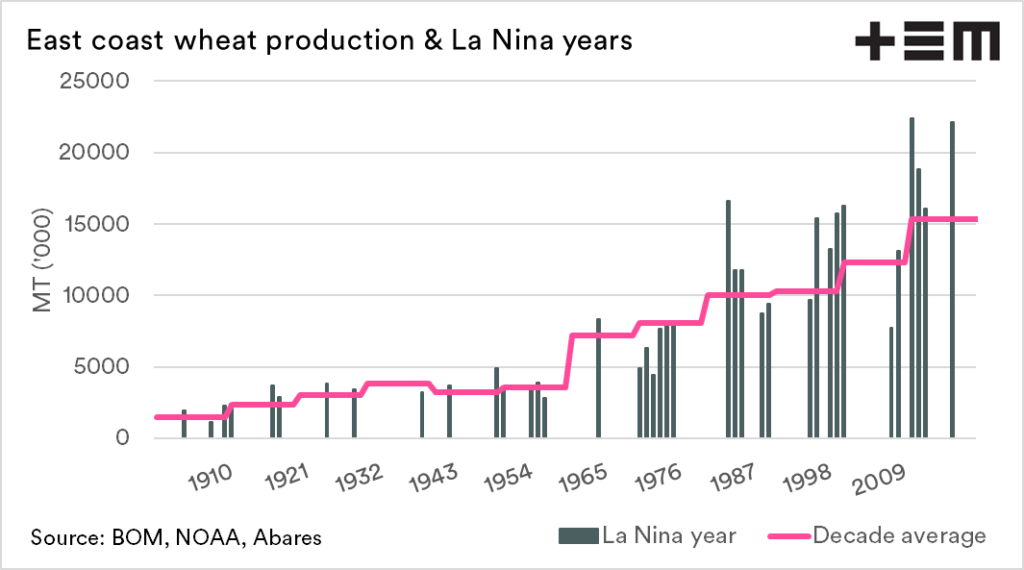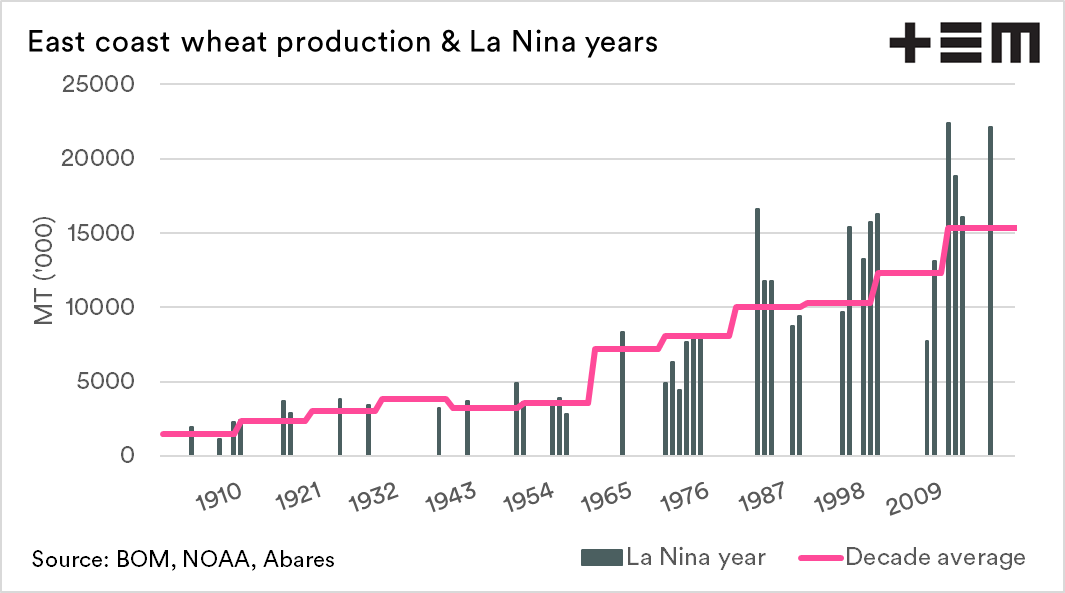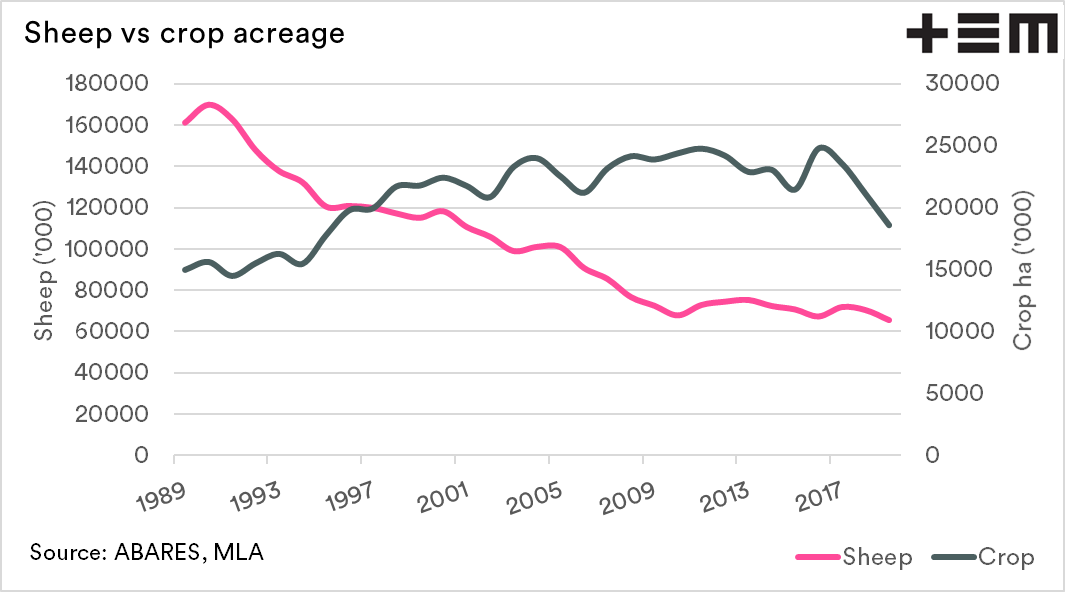La Nina to bring the rain?

The Snapshot
- The BOM has declared a 70% chance of a La Nina event forming during 2020.
- A La Nina event tends to bring wetter weather to the eastern portion of Australia. The WA cropping region tends to have average to drier seasons during a La Nina.
- Typically La Nina events have resulted in higher than decade average wheat production in the eastern states.
- The positive impact of La Nina has been felt more in recent decades
- The positive impact coincides with improved agronomic practices and a move for cropping area to move into lower rainfall regions, at the expense of sheep.
The Detail
In recent days the BOM has declared that there is a 70% chance of a La Nina event forming in 2020. This is good news for some.
Here is a technical explanation of a La Nina event:
“La Niña occurs when equatorial trade winds become stronger, changing ocean surface currents and drawing cooler deep water up from below. This results in a cooling of the central and eastern tropical Pacific Ocean. The enhanced trade winds also help to pile up warm surface waters in the western Pacific and to the north of Australia.
The warming of ocean temperatures in the western Pacific means the area becomes more favourable for rising air, cloud development and rainfall. As a result, heavy rainfall can occur to the north of Australia. Conversely, over the eastern and central tropical Pacific, air descends over the cooler waters, meaning the region is less favourable for cloud and rain.” (BOM)
In summary, a La Nina event can make the east coast (SA, VIC, NSW, QLD) wetter, whilst the west tends to be average.
The chart below shows the decade average wheat production (pink) line with each of the years considered La Nina since 1900. As we can see, the La Nina years tend to result in average (for the decade) to above production.
One of the interesting points to note is that production in recent decades seems to have experienced a stronger positive impact on production in La Nina years. I’m not an agronomist, but my theory was that technology and agronomic practices had improved allowing for higher water use efficiency in the years of abundant rainfall.
Gregor Heard posited another idea (see here) regarding the increase in farming of low rainfall zones. This would coincide with the move from sheep to cropping, which we can see in a comparison of sheep numbers vs cropping area.
In reality it is likely to be a combination of both, as modern agronomic practices allow the low rainfall areas to be cropped.




